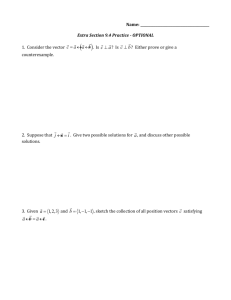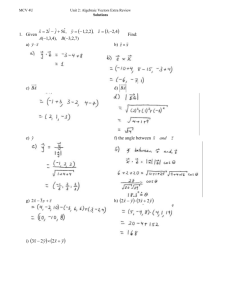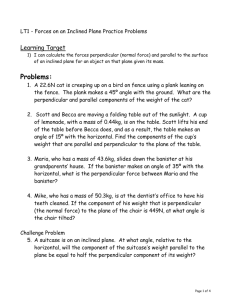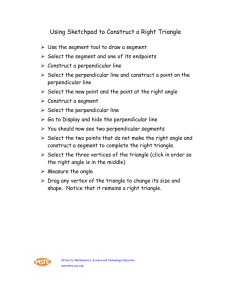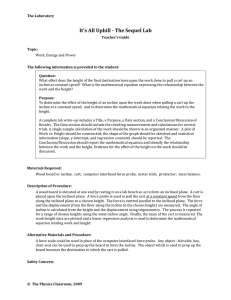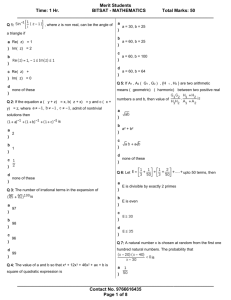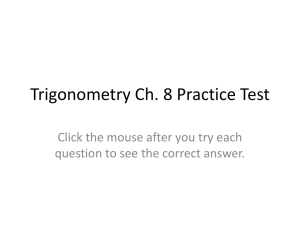The Inclined Plane
advertisement
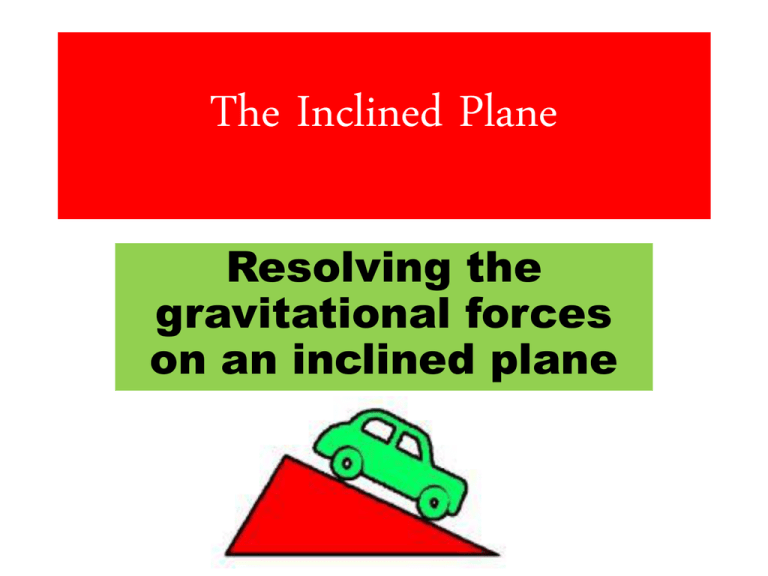
The Inclined Plane Resolving the gravitational forces on an inclined plane First draw a box on the inclined plane Now draw the weight vector. In what direction should the weight vector be? Don’t forget to label the vector! Fw The weight vector has two components. • 1) the perpendicular force • 2) the parallel force (this force pulls the object down the incline) Fp Fw Fⱶ Envision the parallel force in the triangle. The weight vector is the resultant vector which is the diagonal of a parallelogram. Fp Fw Fⱶ Label theta in the force triangle. The force triangle is SIMILAR to the hill triangle. What does this mean about the angle of the incline and theta? Fp θ θ Fw Fⱶ This angle! Yes! They are the same angle! Important things to remember about inclined plane problems: • 1) The weight of the object is always found by multiplying the mass by 9.8 m/s2 and its vector is ALWAYS straight down. • 2) The parallel force and the normal force are ALWAYS equal! • 3) The angle of the incline is ALWAYS the same as the force triangle’s angle. Let’s work a problem! • A cart weighing 420 N rests on a 23o incline. Calculate the component of its weight that presses the cart to the hill. • Which force are we looking for? • Perpendicular force • Step 1: Draw the free body diagram. • Step 2: Label the magnitude of the vectors you know and the angles you know. • Step 3: Use SOHCAHTOA to find the missing force’s magnitude. In this case, the perpendicular force. This is how you do it! Another Example: • Calculate the parallel force component of the weight of a 3600 kg car that is resting on a hill which is 35o above the horizontal.

